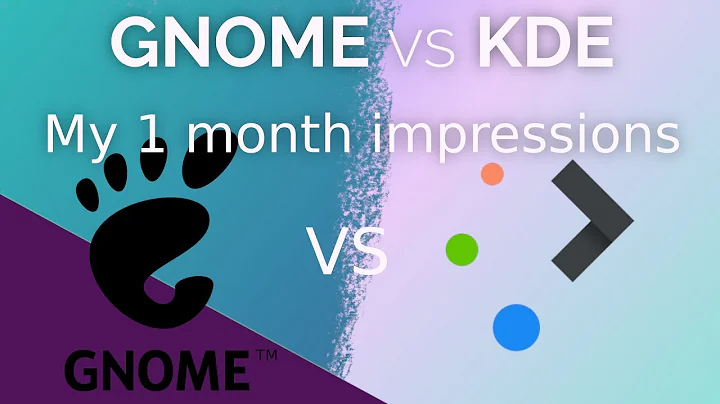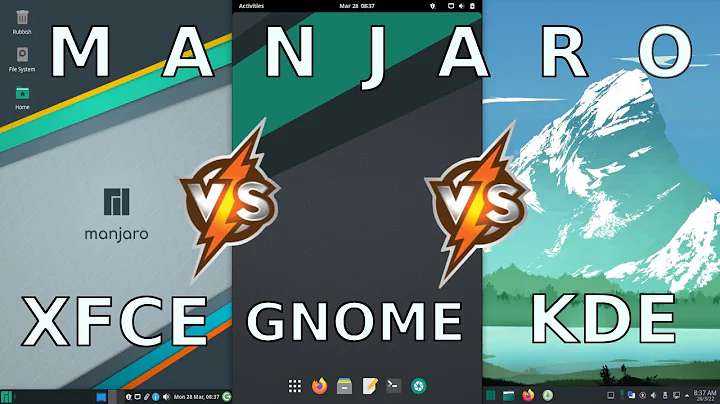KDE, GNOME Popularity comparison
Datamation's June 2012 article suggests that while GNOME has lost users, KDE has failed to pick them up:
Over the last fourteen months, discontent with Unity and the GNOME 3 series of releases have sent GNOME users galloping in all directions in their search for alternatives. Xfce and Linux Mint's Cinnamon and Mate in particular have benefited from this search. However, one alternative that users have not considered to any extent is KDE.
Considering the years in which GNOME and KDE were considered the main desktop environments for Linux, this trend is surprising at first.
Yet the trend seems hard to deny. Compare the results of LinuxQuestion's Members Choice Awardswith the statistics from previous years, and you’ll see that GNOME 3's release cost the desktop as much as half its users.
However, the same comparison suggests that KDE is only at three-quarters of its pre-KDE 4 popularity.
Meanwhile, a question on unix.stackechange discusses why distros have historically bundled GNOME over KDE: Why do most linux distros default gnome?
It's difficult to get an accurate read on the popularity without relying on survey data.
Related videos on Youtube
notablytipsy
Updated on September 18, 2022Comments
-
notablytipsy over 1 year
How popular is KDE? I found several sources saying that it's the most popular desktop environment, but I've also read that popular third-party software (Firefox, for example) are written for GNOME since that is more popular. So what's the official answer?
Note: I'm not asking which one is better
This was based on a poll: http://www.muktware.com/articles/3518/kde-voted-most-popular-desktop-environment
This is a blog post: http://www.thepowerbase.com/2012/01/5-reasons-why-kde-is-better-than-unity/
Basically, I didn't find a good official answer.
-
 BuZZ-dEE over 11 yearsFirefox is not written for GNOME. The integration of Firefox in GNOME isn't very good. For example, there is no GNOME keyring integration. The look of Firefox is also not GNOME like. The integration of Chromium in GNOME is much better.
BuZZ-dEE over 11 yearsFirefox is not written for GNOME. The integration of Firefox in GNOME isn't very good. For example, there is no GNOME keyring integration. The look of Firefox is also not GNOME like. The integration of Chromium in GNOME is much better. -
notablytipsy over 11 yearsWhat is Firefox written for? Because it's kerrible with KDE.
-
 Admin over 11 yearsIt is better to post separate questions instead of combining your questions into one. That way, it helps the people answering your question and also others hunting for at least one of your questions. Thanks!
Admin over 11 yearsIt is better to post separate questions instead of combining your questions into one. That way, it helps the people answering your question and also others hunting for at least one of your questions. Thanks! -
notablytipsy over 11 yearsI have only one question. Also, why was I downvoted and voted to close?
-
 Admin over 11 yearsI downvoted because, IMO, "This question does not show any research effort; it is unclear or not useful." I voted to close because, IMO, the question is not a support question.
Admin over 11 yearsI downvoted because, IMO, "This question does not show any research effort; it is unclear or not useful." I voted to close because, IMO, the question is not a support question. -
Eliah Kagan over 11 years@asymptotically I agree. But I recommend editing your question to link to the sources you did find.
-
notablytipsy over 11 years@EliahKagan Thanks, I've added them. The answer given seems to make sense, though a link to official statistics would be better.
-
notablytipsy over 11 yearsI'm not polling, I'm asking for a link to official statistics. I meant that the statistics in that page were based on polls
-
Jorge Castro over 11 yearsThere's really no way to measure, the links in your question and in the one answer are really just webpolls and aren't indicative of what people use.
-
notablytipsy over 11 yearsWhich is why I wanted more accurate information - like number of downloads/installs. It's ok; I realize this isn't constructive.
-
-
trusktr almost 11 yearsIt's easy to see why Gnome has historically (before Gnome 3) been the preferred DE to bundle with distributions: because it's easier to use and learn, unlike KDE, which has many bells and whistles and a higher learning curve (not to mention that out of the box KDE newcomers will wonder where the heck their desktop icons are).




